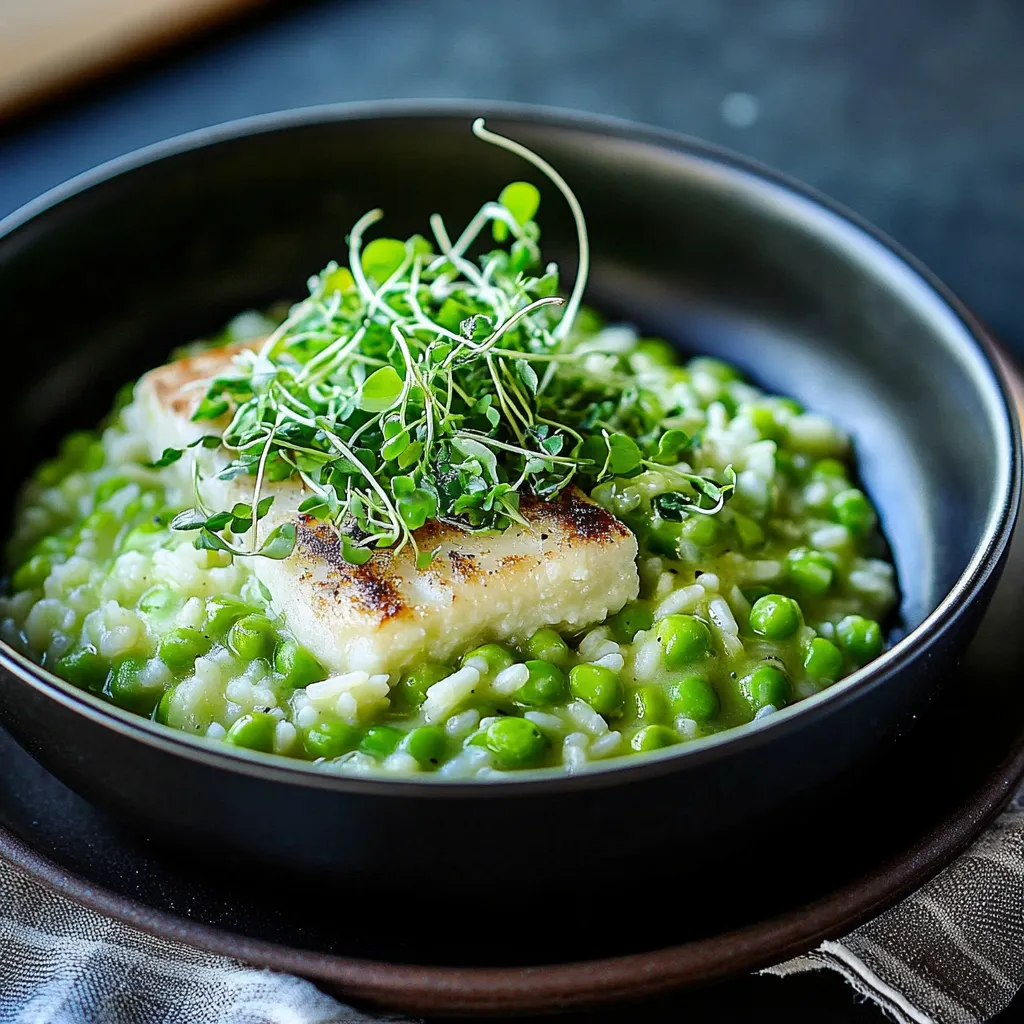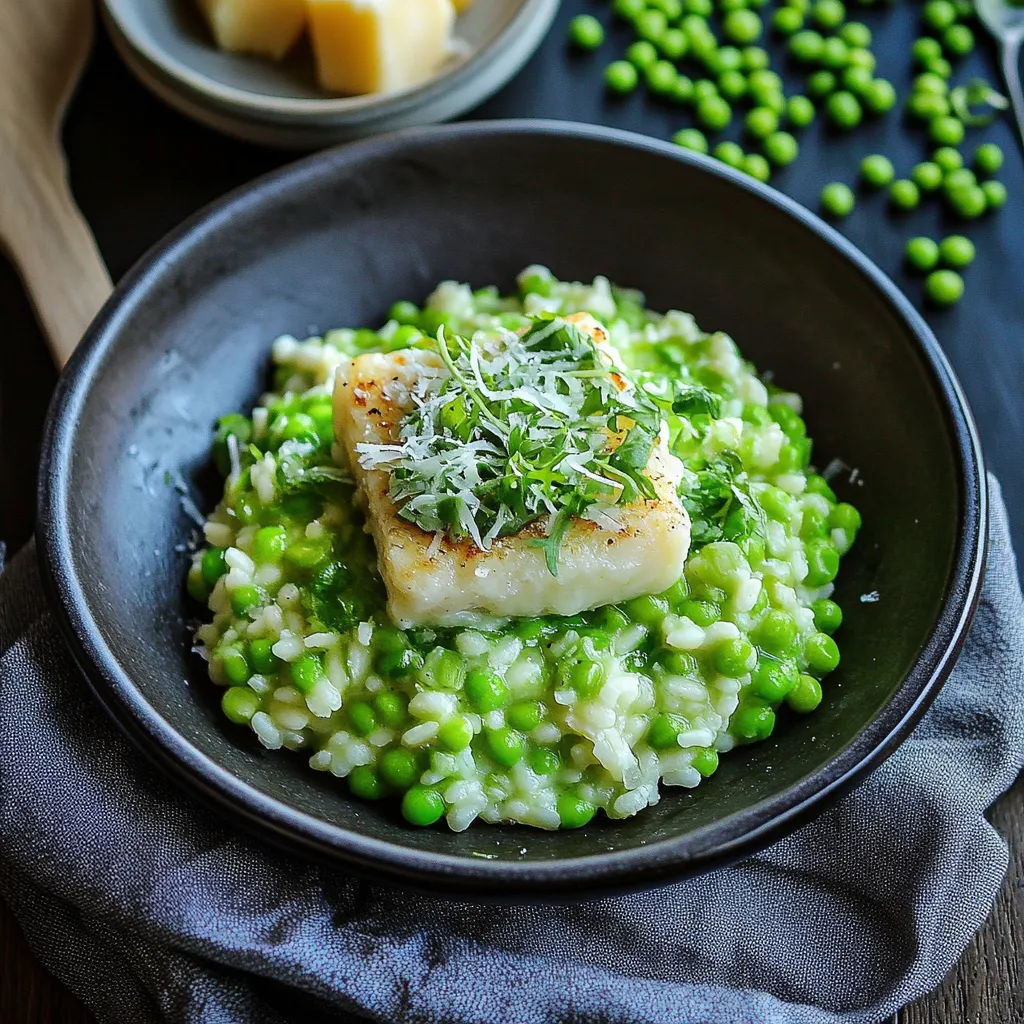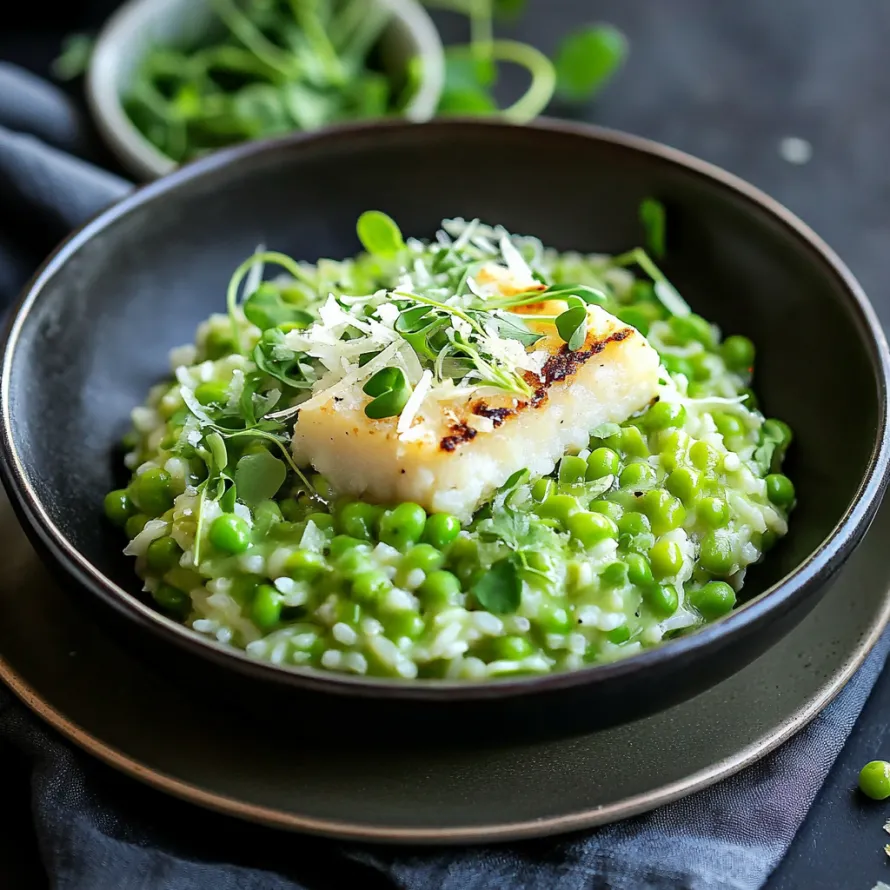 Save
Save
This creamy pea risotto turns basic ingredients into a rich, indulgent meal that highlights the natural sweetness of spring peas against a flavorful base of well-cooked arborio rice. I stumbled upon this dish while visiting Northern Italy and have been tweaking my version at home for years now.
This risotto became my go-to specialty after making it for a dinner gathering where even my pickiest friend asked me how I made it. There's something about mixing sweet peas with rich cheese that makes everyone want another helping.
Ingredients
- Arborio rice: Gives you that wonderful creaminess without turning to mush
- Vegetable broth or chicken stock: Forms the base flavor; homemade will take this to another level
- Fresh or frozen peas: Both options taste great; grab frozen to save some prep time
- Pecorino cheese: Offers a tangy saltiness that cuts through the peas' sweetness
- Lemon zest: Adds a fresh pop to the whole dish; try to use organic fruit if you can
- Fresh mint: Brings an unexpected cool flavor; look for bright green leaves
- Truffle oil: Turns your simple meal into something special; just a few drops does the trick
Step-by-Step Instructions
- Prepare the Broth:
- Heat your vegetable or chicken broth in a pot until it's hot but not bubbling. Keep it warm while you cook since cold liquid will stop the rice from releasing its starches.
- Sauté the Aromatics:
- Pour olive oil into a thick-bottomed pot over medium-low heat and add shallots with garlic. Cook them slowly for around 5 minutes until they smell amazing and turn golden. Taking your time here builds the taste foundation.
- Toast the Rice:
- Put the arborio rice in your pot and keep stirring for about a minute. You'll hear a soft crackling as the grains toast, which helps them keep their shape as they cook.
- Begin the Gradual Broth Addition:
- Add white wine and stir until it's gone. This adds flavor and helps the rice grains open up. Then pour in your first cup of warm broth, stirring now and then until it's soaked up, roughly 5 minutes, before adding more.
- Continue the Risotto Rhythm:
- Keep adding broth a cup at a time, letting each portion get mostly absorbed before adding another. The stirring helps release starch for that signature smoothness. This whole process takes about 20 minutes.
- Prepare the Pea Components:
- While cooking your risotto, get your peas ready. If they're fresh, drop them in salted boiling water for 2-3 minutes until they're bright and tender. Split them in half, then blend one portion with water and olive oil until smooth.
- Finish with Enrichments:
- When your rice feels tender but still has a tiny bit of firmness, mix in the pecorino, lemon zest, whole peas, and pea puree. The hot risotto will quickly melt the cheese, making everything super smooth. Stir in most of the mint, saving some to sprinkle on top.
- Season and Serve:
- Give it a taste and add salt, pepper, or lemon as needed. Scoop into warm bowls and finish with a tiny drizzle of truffle oil and the leftover mint.

I first cooked this risotto when my Italian grandma came to visit, and she said it took her back to springtime in Milan. The way the bright green pea mixture swirls through the creamy rice doesn't just look pretty but creates flavor that gets better with every bite.
Making Ahead and Storage
Most people think risotto has to be eaten right away, but with some tricks, you can prep parts ahead. You can blanch peas and make the puree up to two days early and keep them in the fridge. You can also partially cook the risotto about 15 minutes in, then spread it on a baking sheet to cool down. Put this half-cooked rice in the fridge, then finish it with hot broth and mix-ins just before you want to eat. Fully cooked risotto will stay good in the fridge for three days max, though it will get thicker. Just warm it up slowly with extra broth until it's creamy again.
Perfect Pairing Suggestions
This fresh risotto goes great with crisp white wines like Pinot Grigio or Vermentino that match the sweet peas without being too strong. For a full meal, try it with seared scallops whose browned outsides make a nice contrast to the soft risotto. A simple arugula salad with lemon and olive oil adds a nice bitter note against the dish's richness. When it's colder out, this risotto tastes amazing topped with crispy pancetta or prosciutto, which adds a crunchy texture against the smooth base.
Seasonal Adaptations
While you can use frozen peas anytime, this dish really shines in late spring when fresh peas are super sweet. In summer, try swapping half the peas for fresh corn kernels for a nice change. During fall, replace some broth with pumpkin puree, and in winter, try adding crispy sage or a spoonful of mascarpone. The basic recipe can change in so many ways with the seasons while still keeping its comforting feel.

Make this when you want to wow someone—it's fancy but still comforting.
Common Recipe Questions
- → Can I swap fresh peas for frozen ones?
You sure can! Frozen peas are just as good and often easier to use since they’re already prepped. Toss them straight into the risotto without thawing first. They lock in great flavor as they’re frozen at their peak.
- → What’s a good alternative to white wine in this dish?
If you don’t want to use wine, just mix some water with a little lemon juice for that tangy touch. You could also try vegetable stock with a splash of vinegar or stick with non-alcoholic white wine for the same effect.
- → Why is it important to stir risotto so often?
Frequent stirring helps pull the creamy starch from the rice, giving the dish that luscious texture. It also keeps the rice from sticking and ensures everything cooks evenly. Stirring while adding broth lets the rice soak up flavor gradually.
- → How can I tell if the risotto is ready to eat?
The rice should be creamy but still firm right in the center—Italians call this 'al dente.' The whole dish should spread gently on a plate, looking wavy and not clumpy. You’ll usually hit this point after about 20 minutes of cooking.
- → What should I pair with pea risotto?
This dish is versatile! It can be a meal on its own, or you can pair it up. Think grilled fish, seared scallops, smoky bits of chorizo, sautéed mushrooms, or even some fresh roasted veggies on the side.
- → Can I prep risotto in advance?
While best eaten fresh, partially cooking ahead works too. Stop cooking when it’s about 75% done, then spread it on a tray to cool before refrigerating. When ready to serve, continue cooking with hot broth and finish with your toppings. The texture might be slightly different but still delicious.
